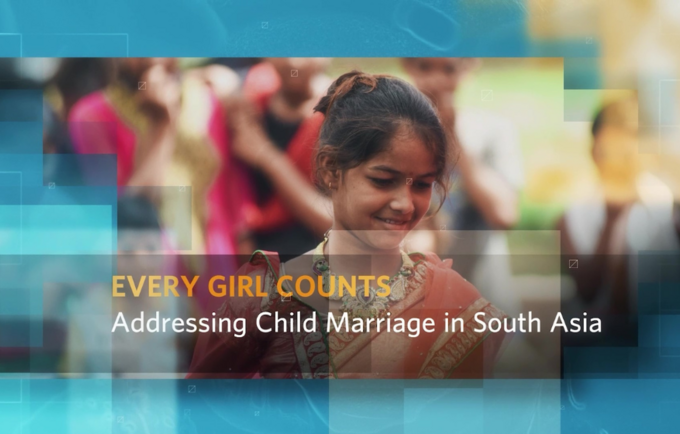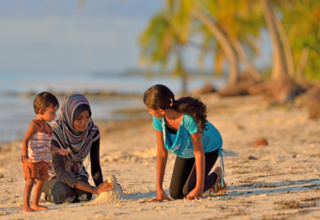Child marriage is defined as a marriage whereby at least one of the people involved in the union is under the age of 18. It is illegal in 96 percent of countries and considered a violation of child rights and of human rights. And yet: the practice remains widespread around the world. Three of the South Asian countries with the highest prevalence of child marriage are: India, Bangladesh and Nepal.
South Asia, where child marriage is illegal, is home to 45 per cent of the world’s child brides. Indeed, in South Asia, more than one-third of girls are married before the age of 18, three in four child brides in the region give birth while they are still adolescents. Thus, the majority of child marriage occurs in middle adolescence. Some say the prime of a girl’s life. Certainly a time when education and health should take centre stage. Indeed, when dreams should dominate.
Child marriage hurts a girl in multiple ways. From education to health, ever perpetuating the cycle of poverty. Let’s look at each of these, and how they intersect.
Health: Girls' bodies are not mature enough to manage pregnancies in adolescence. As a result, complications are very common during pregnancy and whilst giving birth.
Education: Frequently girls who are married are forced to leave school. Conversely, education is fundamental to breaking the cycle of poverty. Girls from more educated and wealthier households are less likely to marry in childhood.
Poverty: the communities with the highest prevalence of child marriage are most often that triple threat of being rural, poor and less educated than national averages. The cycle of poverty continues because girls are usually forced to drop out of school, which not only means they are less educated as mothers (in regards nutrition, health and sexual reproductive health) but are also less likely to encourage their children, particularly the girls, to continue onto higher education and/or tertiary education. When children get sick often, they miss school and lag behind, often leading to dropping out – another contributing factor to the continuing cycle of poverty.
Climate change, COVID-19 and its aftershocks, and the interconnected web of other polycrises amplify vulnerabilities and escalate the risk of young girls being pushed into marriage.
Extreme weather events, resource scarcity, and displacement: As communities grapple with the fallout of climate change, families often face worsened economic hardship, compelling them to resort to child marriage as a coping mechanism. This familial struggle for survival leads parents to view early marriage as a strategy to reduce the economic burden on the family and secure perceived safety for their daughters. Gender inequalities are exacerbated within societies as child marriage perpetuates patriarchal norms and violence.
In addition to economic factors, vulnerabilities arise from the disruption of education caused by climate-related events: With schools frequently affected by natural disasters and families struggling to recover, girls can face more barriers to accessing education. As educational opportunities dwindle, girls are left with fewer avenues for personal development and empowerment, making them more susceptible to early marriage. This lack of education also limits their ability to escape cycles of poverty, and instead, perpetuates the cycles of poverty and vulnerability.
UNFPA recognizes the profound impact of megatrends like climate change and global crises on vulnerable populations, particularly young girls facing risks of early marriage. In response, the organisation works with top down and bottom-up approaches; ensuring strategies that integrate climate resilience, particularly access to education and life-skills training, and incorporating sexual and reproductive health education, and gender empowerment, where possible.
However, there is some good news. UNFPA, across the South Asian region, indeed addresses the intricate intersectionality of the polycrises and other challenges, fostering sustainable solutions that prioritise the well-being and agency of young girls in the face of evolving global dynamics: With a wealth of experts in gender and harmful practices, human rights, social policy, education and sexual and reproductive health, they promote adolescent rights, gender equality and accessible sexual and reproductive health and social services. The joint ‘UNFPA-UNICEF Global Programme to End Child Marriage’ works with governments, CSOs and other stakeholders to build policies, legislation, and programmes to ensure rights to childhood, play and education, are not overlooked, ignored or violated.
The harms of child marriage are indeed convincing enough to policy makers, community leaders, religious leaders and parents. But prohibitions themselves are not always sufficient, because child marriage is typically the result of a lack of choices and because it is viewed as the norm. Families, girls, and communities need alternatives to child marriage that can take the form of education and employment opportunities, social protection from income loss and catastrophic expenditures and safer, more stable living environments.
Simultaneously, of course, laws prohibiting child marriage need to be enacted, strengthened and enforced. And more attention is needed to related laws such as on bride price and dowry, marital rape, birth and marriage registration and mandatory schooling. But laws alone will not end child marriage.
In Bangladesh despite progress in achieving the SDGs, poverty, social inequality and discrimination against women and girls are still major challenges. There are reportedly 38 million child brides in Bangladesh, 13.4 million of whom were married before 15. Yes read that slowly: more than 13 million children were married before their 15th birthday.
And, in areas, there are clear signs things are actually getting worse. A health survey – looking at child marriage in non-slum urban settings over the last 8 years – found an upward trend. In turn, this has led to a significant jump in the adolescent pregnancy rate in non-slum urban settings, from 13 per cent to 20 per cent.
Young girls experience harassment from men and boys even when going to school or playing outside. This can often force them into early marriage as parents often view marriage as a safer alternative in life! One intervention by UNFPA and partners has seen more than 8,000 girls receive bikes to support them to get to school more safely. These are game changers.
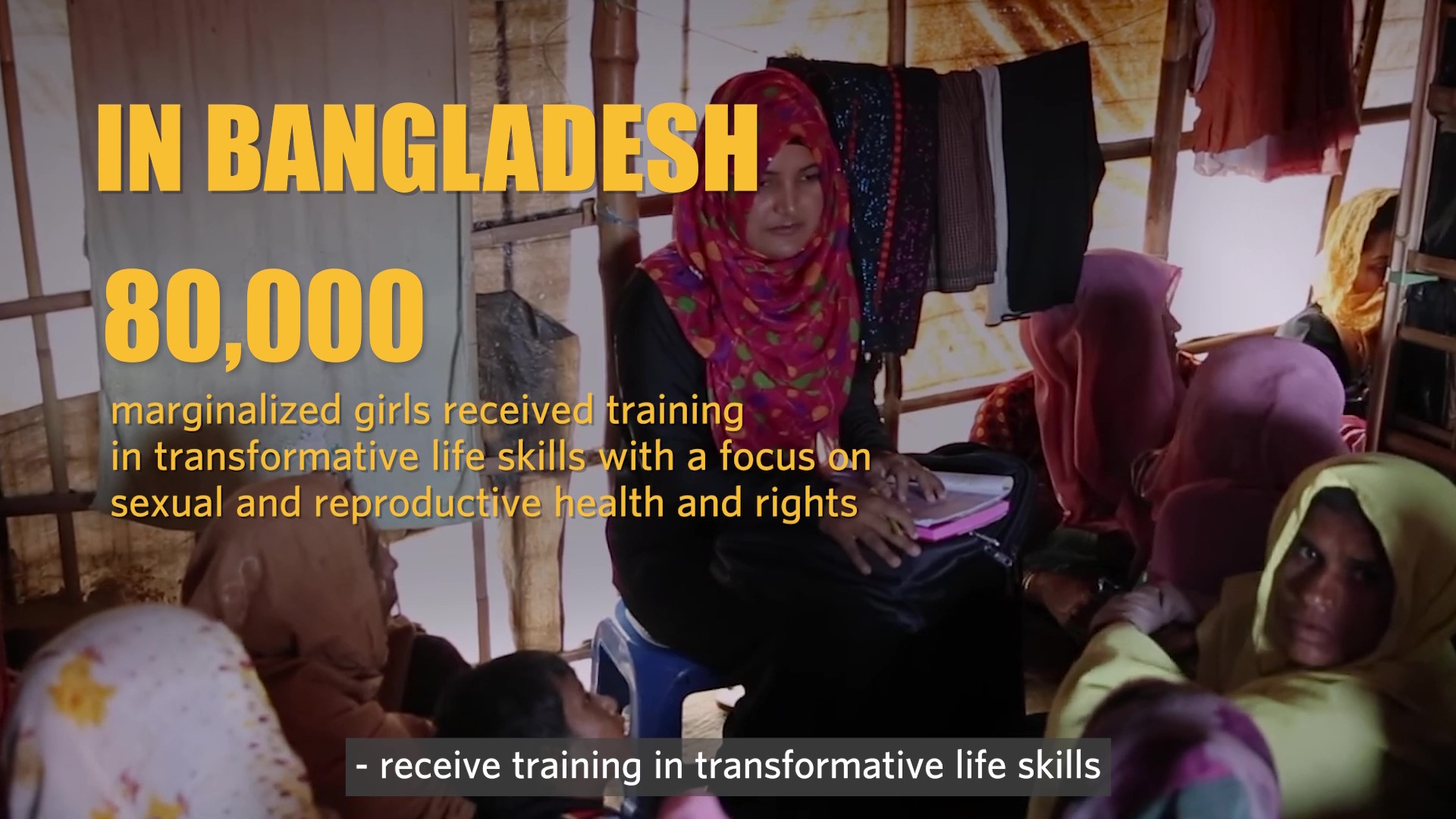
There have been many other interventions too with some impressive results: tens of millions reached with messaging in madrasas, a TV series and the ‘I make my rules’ digital campaign by the end of 2022.
Interventions from the “UNFPA-UNICEF Global Programme to End Child Marriage”, in Bangladesh, have seen the creation of drop-in safe spaces for girls across the country. The project is implemented by the Ministry of Women and Children Affairs. These safe centers, known as ‘Kishori Resource Centers’, have also provided life skills, sexual reproductive health education and good opportunities to more than 25,000 adolescent girls so far. Additionally, 480 child journalists from 24 districts have been trained and already 150 news reports and 30 new videos were produced – all on ending child marriage and girl empowerment.
In Nepal, there are four million child brides, 1.2 million of whom were married before the age of 15. However the numbers are declining. And there are some clear achievements thanks to solid interventions. In 2022 more than 57,000 girls participated in life skills or comprehensive sexuality education (CSE); 10.2million children and adults were reached with traditional media and social media messaging on child marriage, the rights of adolescent girls and gender equality. And more than 48,000 participated in group dialogue sessions on the consequences of – and alternatives to child marriage. Hundreds of service delivery points in programme areas provided good quality adolescent-responsive health, child protection or gender-based violence (GBV) services that meet minimum standards.
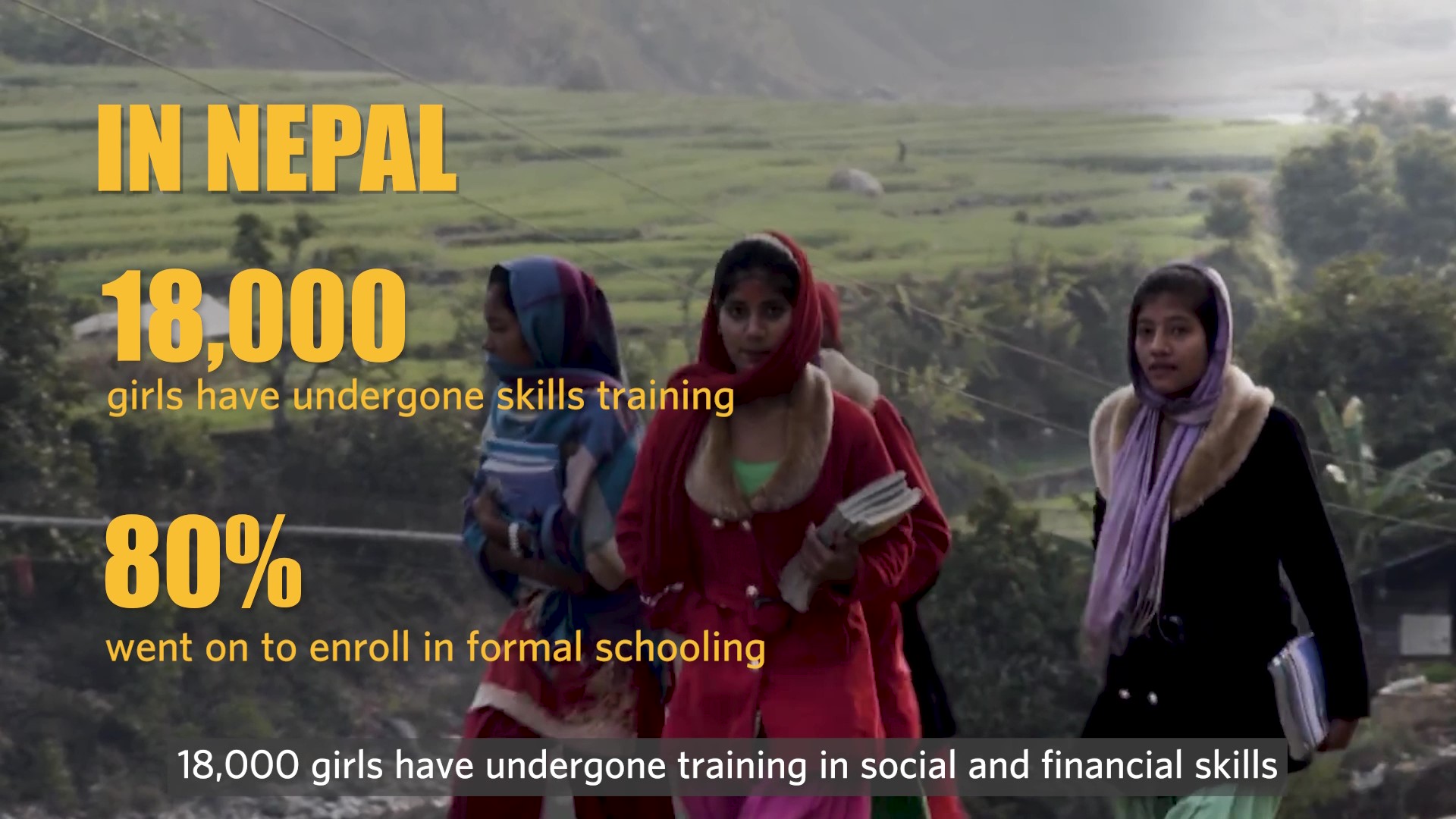
To India: the country has significant improvements in health and education in the past decade, as well as a 50 per cent reduction in child marriage, thanks to successful interventions over the years. However, as is the case in so many countries, there remains poly-crises since the COVID-19 pandemic. The ruptures in health systems, education, livelihoods, food and nutrition are ongoing, and have brought back elevated risks of early or child marriage and unions. And wide gender inequalities still persist. All challenges that UNFPA and partners are tackling.
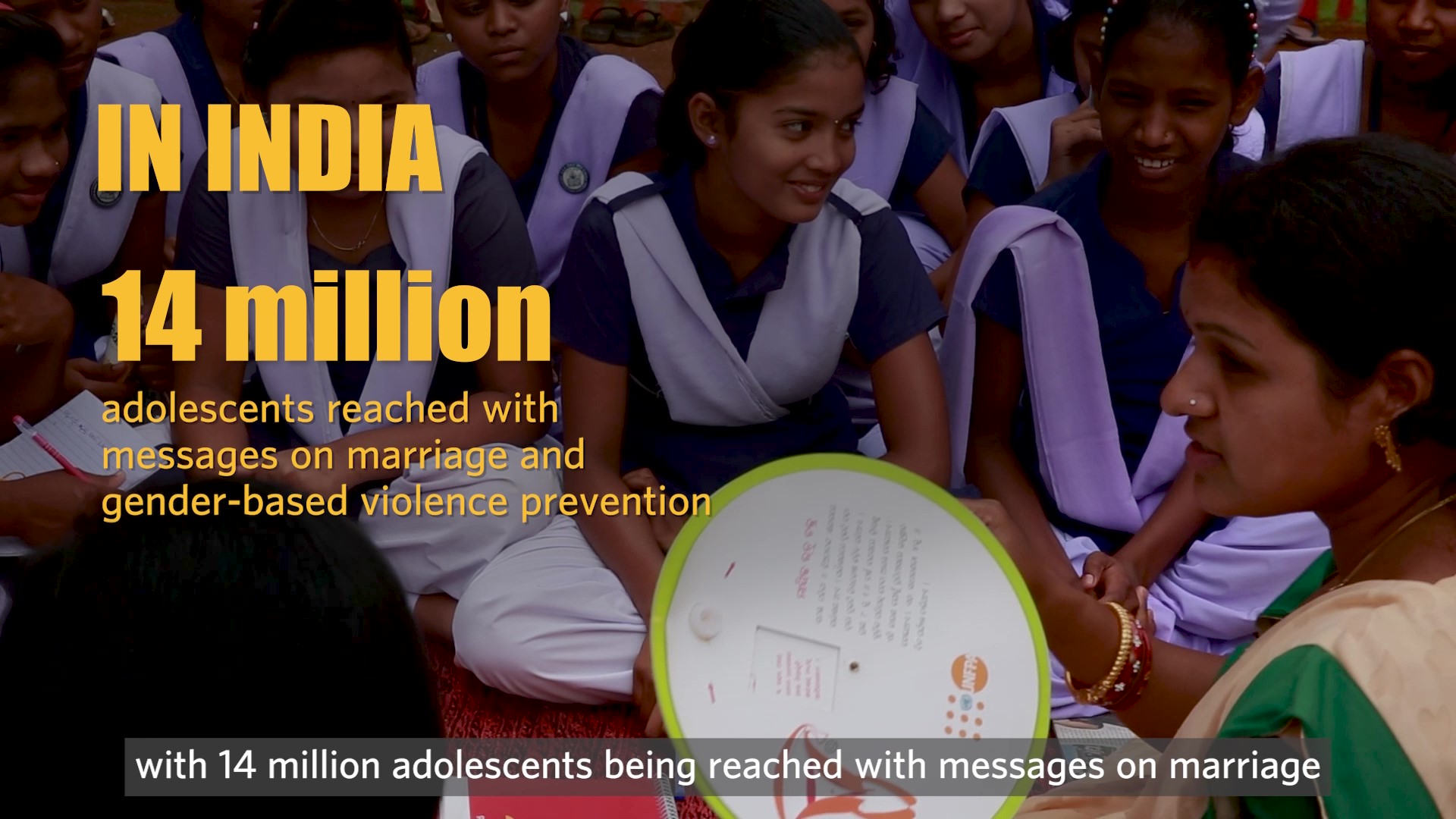
Thus, the work of the Global Programme partners has enormous importance in building the resilience of girls, families and communities - particularly for those who are rural dwellers and with lower education levels. Nearly six million people in life-skills and comprehensive sexuality education; 84,000 were facilitated to enrol in or stay in school; 80 million community members were reached with information to galvanise against child marriage; 384 new partnerships were created to deliver adolescent-responsive social protection and 181 direct action plans were approved for implementation across 10 states. These things matter.
Indeed, these interventions are not an exhaustive list but, in sum, UNFPA’s work with the Government of India has led to increased investments in literacy for mothers; better access to empowerment, life skills, SRH education and education for girls; and strong public messaging on ending child marriage.
While progress is evident in success stories from Bangladesh to Nepal and India, the road ahead demands sustained efforts, collaboration, and innovative solutions. As of January 2024, the Global Programme to End Child Marriage is in its third phase, with the long-term goal of enabling much larger numbers of adolescent girls and boys to experience a childhood free from the risk of marriage.
UNFPA remains dedicated to fostering resilience, dismantling harmful gender and social norms, and providing alternatives, ensuring that the dreams of countless young girls transcend the shadows of child marriage, ultimately ushering in an era of empowerment, equality, and fulfilled potential.
These efforts will be the building blocks for a stronger, more productive South Asia.
 |
Upala Devi Regional Gender and Human Rights Technical Adviser, UNFPA Asia and the Pacific Regional Office |
|
|
